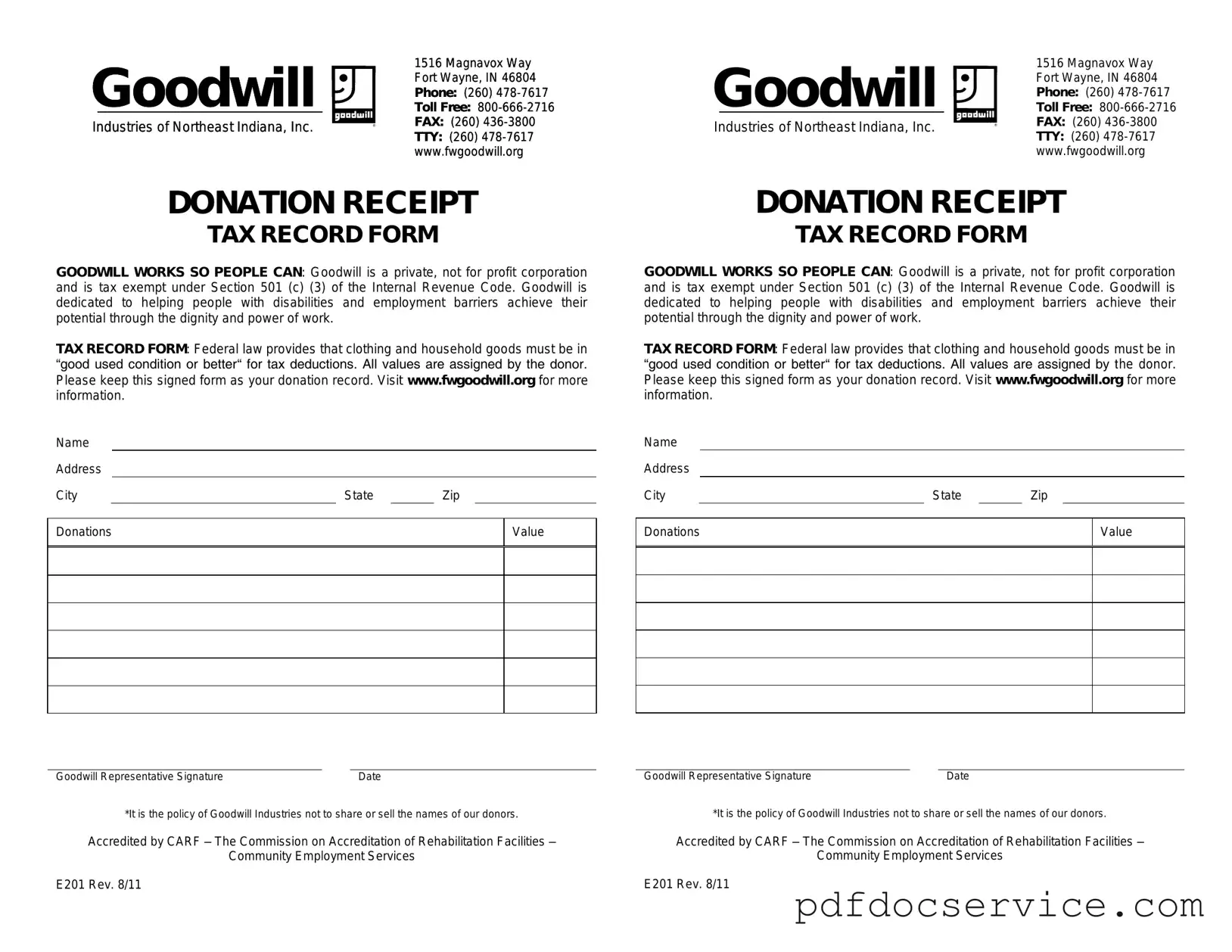A Goodwill donation receipt form is a document provided to donors when they give items to Goodwill Industries. This receipt serves as proof of the donation for tax purposes. It typically includes details such as the donor's name, the date of the donation, and a description of the items donated.
How do I obtain a Goodwill donation receipt?
To receive a Goodwill donation receipt, simply ask for one at the time of your donation. Goodwill staff will provide you with a receipt after you drop off your items. If you forget to ask, you can still contact your local Goodwill location to request a copy, but it may be more challenging to obtain.
What items can I donate to Goodwill?
Goodwill accepts a wide variety of items, including:
-
Clothing and shoes
-
Household goods
-
Furniture
-
Toys and games
-
Electronics
However, some items are not accepted, such as hazardous materials, large appliances, and certain types of furniture. It’s best to check with your local Goodwill for a complete list of acceptable items.
Can I claim my donation on my taxes?
Yes, you can claim your donation on your taxes if you itemize deductions. The Goodwill donation receipt serves as documentation of your contribution. Keep in mind that the IRS requires you to value your donated items accurately. For larger donations, it may be wise to consult a tax professional to ensure you comply with all regulations.
What should I do if I lose my donation receipt?
If you lose your Goodwill donation receipt, you can try to retrieve a copy by contacting the Goodwill location where you made your donation. Provide them with details such as the date of the donation and the items donated to help them locate your record. However, there is no guarantee that they will have a copy available.
